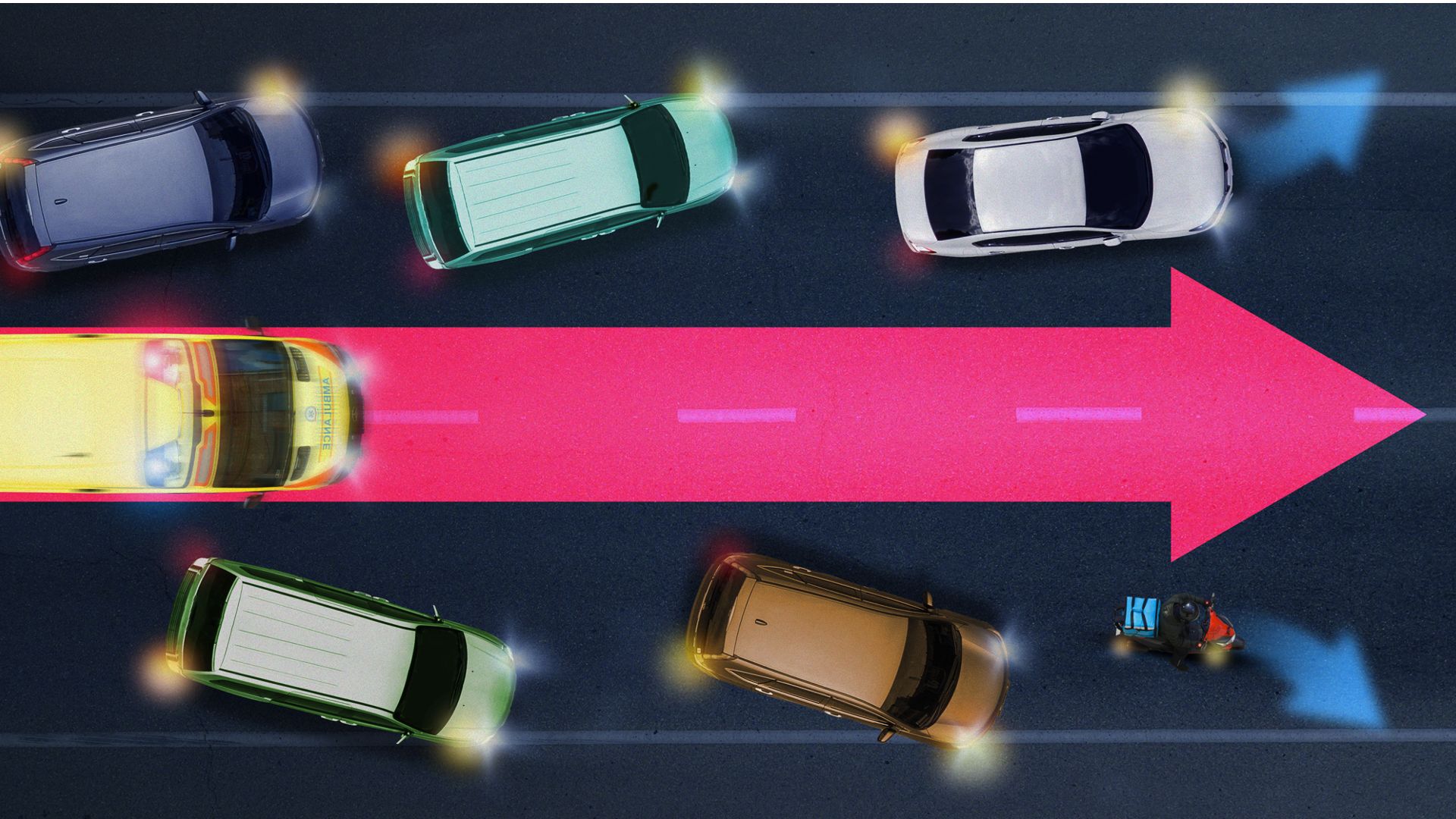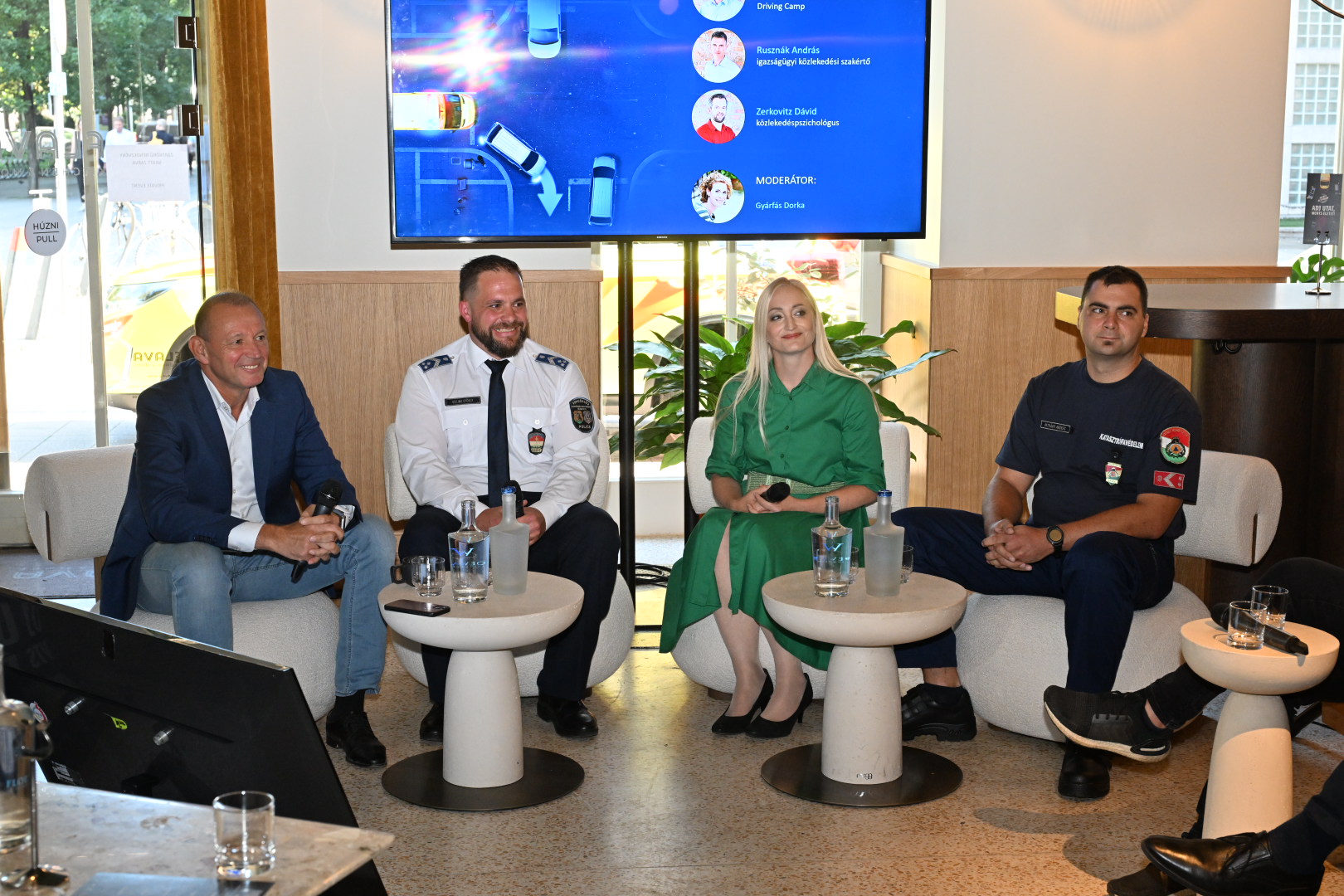news
A life can depend on half a minute
Seven out of ten drivers react incorrectly to the arrival of vehicles using distinguishing signs. While most drivers encounter vehicles with distinguishing signals weekly, according to the experience of professionals and first responders, only three out of ten drivers react appropriately in such situations. The others make poor decisions or hinder the progress of sirening vehicles with delayed reactions. Yet, in many cases, a person's life can depend on even half a minute. In the "Together on the Roads - Give Way, Save Lives!" campaign by Magyar Suzuki, with the cooperation of the ambulance service, disaster management and police, they aim to draw attention to supporting those providing assistance in traffic.
More than 64 percent of drivers encounter sirening vehicles at least once a week. Although 59 percent of them believe that overall, drivers react appropriately in such situations, two out of ten do not yield, and every 10th driver is not familiar with the relevant traffic rules, according to a representative survey conducted by Ipsos on behalf of Magyar Suzuki. In 44.6 percent of respondents, the thought of how to assist the passing vehicle crosses their minds, but half of drivers (49.5%) are more concerned about the situation of the person in distress. Most drivers, according to their own admissions, do not stress because they know exactly what to do in such situations (79.8%). However, one in five drivers leaves the safe resolution of the situation to the driver of the passing vehicle, and almost 10 percent feel fear and panic when they hear the siren.
However, traffic experts and first responders experience this differently in their everyday work. According to them, only three out of ten drivers react appropriately, while the others make poor decisions or hinder the progress of first responders. This might not be surprising, as although traffic regulations (KRESZ) govern such situations, drivers do not receive training of this nature when obtaining their driver's licenses. Traffic psychologist Dávid Zerkovitz puts it this way: panic is an automatically emerging personality trait in stressful situations, and afterward, we tend to downplay the gravity of the situation and embellish our own reactions.
The best scenario is when they can proceed continuously
The organizations supporting the "Together on the Roads - Give Way, Save Lives!" campaign, including the disaster management, police, and ambulance service, all agree that among drivers - although they often effectively support them - they observe uncertainty. This is also supported by the data from the survey. 64 percent of the participants in the survey typically pull over, even onto tram tracks or in front of a red traffic light, but only three out of ten drivers know that this is allowed by traffic regulations (KRESZ). The second most common solution is immediate stopping (17.3%) in such situations. However, it is a general belief among helpers that the biggest time loss occurs when they have to come to a complete stop and then restart when drivers stop where they are without pulling over.
"In the case of alerting to a critical patient, a person's life can depend on even half a minute. While we may only be talking about a few seconds in some places, the overall time loss can add up to several minutes with multiple stops. The greatest assistance comes when we can proceed continuously," said Pál Győrfi, Head of Communications at National Ambulance Service.
"Many people do not even think about the fact that a fire truck, which weighs 16 tons even without 4 tons of water, cannot stop so easily, and even make a maneuver to get out of the way much more difficult than a car," said András Petrányi, Chief Sergeant of the Komárom–Esztergom County Directorate for Disaster Management.
Pay extra attention to traffic
However, not only negative emotions, ignorance and negligence but often also inattention can be hindering factors. Although nearly 98 percent of drivers consider themselves safe drivers, eight out of ten of them multitask (listening to music, talking on the phone, checking their navigation, attending to their children, eating, drinking), which inherently prevents them from reacting in a timely manner to first responders.
"Only when we haven't engaged in additional activities behind the wheel can we react in time. We divert our attention from driving for 4.6 seconds on average when we look at our phones, during which time, in urban traffic conditions, we drive blindly for 55-60 meters . That's why it's important to focus solely on driving as a fundamental practice, especially in congested traffic situations. When something distracts our attention for longer than a moment, we should immediately pull over" suggests László Csörgő, the Head Trainer at Driving Camp.
Generally speaking - and three out of four drivers think this way - the drivers of emergency vehicles with blue lights and sirens have above-average driving skills. However, four out of ten drivers have entertained the thought that the helpers used the light and sound signals unjustifiably. In contrast, police officers can activate them with prior instructions and can only decide on their use independently in unique cases. Firefighters and paramedics, on the other hand, since the alarm has been raised on the emergency line, can use the signals without prior consultation, but they also document their use.
"The use of distinctive signals is regulated and monitored, not random or arbitrary," said György Geiling, Chief Police Sergeant of the Komárom-Esztergom County Police Headquarters.
According to András Rusznák, a judicial traffic expert, as outsiders, we don't have real information about why the emergency vehicle is driving the way it is, but it's not our task to judge this. He says, "We have one job: to assist them as if they were rushing to our own relative or friend, because we can't know if this is indeed the case."
Since it's not just about advanced driving skills, but also about above-average situational awareness and stress tolerance required to operate such vehicles, driving emergency vehicles with blue lights and sirens is only allowed with special permits obtained after theoretical and practical training and examinations. These special permits must be periodically renewed, and in addition to theoretical knowledge, the driver must be physically and mentally fit for the task.
It is our duty to help
However, it is not only the responsibility of drivers but also of all other participants in traffic to assist vehicles using distinctive signals. Helpers often experience pedestrians, scooter riders, and cyclists using headphones. This is critical because they cannot perceive auditory cues in traffic situations, making it impossible for them to react to them. By doing so, they not only endanger themselves but also others.
Magyar Suzuki launched the "Together on the Roads" road safety campaign last year because it believed that there are numerous situations on the roads that require a societal change. Along these lines, the campaign focuses on a different area each year. This year, the campaign focuses on assisting the helpers.
"We want to emphasize that courtesy is not only important but mandatory when it comes to those who have dedicated their lives to providing assistance. Awareness, tolerance, consciousness, calmness, humanity and responsibility – all of these are crucial in traffic. When detecting vehicles using distinctive signals, it is essential for all traffic participants to work together by watching out for each other and assisting" said Zsuzsanna Bonnár-Csonka, the Head of Corporate Communications of Magyar Suzuki Corporation.
What to pay attention to?
• Observe other participants in traffic; their reactions can provide valuable signals and help us.
• Pull over when it can be done safely.
• Use your turn signals to indicate the direction you plan to yield to the emergency vehicle.
• Avoid playing loud music in the car.
• On a two-lane road, move to the side opposite to the emergency vehicle's path; on a road with three or more lanes, adjust your position according to the lane where the emergency vehicle is traveling.
• As a pedestrian, do not run across the pedestrian crossing, and do not attempt to cross the road with a bicycle or scooter when you see or hear an approaching emergency vehicle.
• Avoid using headphones or at least lower the volume when crossing the road, even when the pedestrian signal is green.
• Be cautious even after the emergency vehicle has passed.






